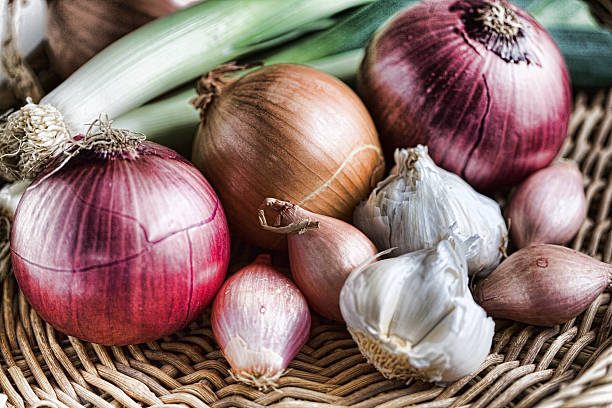Lots of gardeners will be reaping the benefits of crops planted back in Spring and Summer by harvesting their crops of vegetables, potatoes and salad crops - some from a poly-tunnel or glasshouse and some from outside in their garden from raised beds, containers and from the ground. The homegrown flavor is unrivaled with any shop bought produce and there’s a great sense of achievement to go with it. On any empty spaces you can plant some green manure, like Phacelia or Clover mixes - these will act as a weed suppressor, improve soil structure and fix nitrogen in the soil and can be dug into the soil prior to planting next Spring.
If you are considering planting some veg at this time of year you’ll find there’s some very popular and commonly used ingredients that you can get in the ground and harvest late Spring or Summer next year. A real favorite to consider is growing garlic. Most varieties of garlic are best planted in late Autumn or early Winter, as the cloves need a period of cold weather to develop into bulbs. To prepare the ground for planting garlic you want to remove any weeds and grass and any other crops that might have been grown there previously and then dig in plenty of compost and some well rotted manure and rake the soil over. Select a nice sunny location for them to do best. For planting them you want to plant them about 2 inches deep and 6 inches apart - if you are doing a few rows you can space the rows about 12 inches apart. Sometimes the birds can try to pull up the stalks as they emerge from the ground so some light netting above where they’re planted should protect them. If you have very heavy soil you can start your garlic of in small pots and plant them out in Spring when the soil has dried out a little or you can plant them in raise mounds in a bed to avoid the extremes of the wet conditions.You can also consider growing garlic in containers, make sure they have good drainage and a nice rich compost. When you plant them you want to select nice big cloves and plant the pointed end upwards or you’ll see a flat base where the root comes from and that end goes to the bottom and about an inch or two deep. It will be a while before the plants start to develop so you could plant what’s known as a catch crop in the available space - a quick growing crop that you’ll get to harvest before you garlic plants develop - perhaps a salad crop like rocket or mizuna. Garlic doesn’t need a whole lot of looking after, but keep it watered in Spring or during any prolonged dry weather and then reduce the watering when the bulbs are getting large - you see the foliage turning yellow and this indicates that they are nearly ready. Keep them weed free pulling any weeds by hand as using a hoe could potentially harm the bulbs. When they’re ready to harvest carefully lift them with a fork or trowel and leave them out to dry on a tray or on a table in a sunny location
Growing Winter onions is also very worthwhile; the varieties suitable for Autumn planting are more tolerant of cold conditions and can therefore be planted from October right through to March. An advantage of planting onion sets in Autumn is that they take up space that would otherwise be left unplanted, and getting them in the ground before Christmas saves you a job in Spring. Autumn-planted onion sets tend to mature a few weeks sooner than Spring-planted sets, typically from early Summer. They like good free draining, rich soil so dig in plenty of compost and you could dig in some manure a few weeks before planting to enrich the soil. One way you can consider planting them is to cover the ground with black weed-suppressing membrane, then plant the sets through slits. There is then no need for weeding, which both saves time and avoids any accidental damage to the bulbs from using a hoe. Push the sets into the ground about an inch so the tips are just peeking above the ground - a bit of netting will help keep the birds away from pulling them out of the ground and these will be ready to harvest late Spring or Summer. Some relatively simple foods but the homegrown flavour is unrivaled to anything shop bought so give it a go this Autumn - you’ll be delighted with the results
A few jobs for the week ahead;
- You can cut off trusses of unripe outdoor tomatoes before the weather turns too cold, then ripen them indoors.
- Sow seeds like Aquilegia, Lupins, Calendula and Hollyhock for flowers next Spring and Summer and perhaps prep the ground for sowing some wildflower seeds.
- You can plant Autumn Seed potatoes now for a harvesting in the Winter - you could have new spuds for Christmas dinner.
- Set your lawn up for the Winter with some Autumn lawn feed and consider scarifying and aerating the lawn.
- Plant up your Spring flowering bulbs - snowdrops, daffs, tulips, bluebells, alliums a lots more varieties - great for pots and beds.

